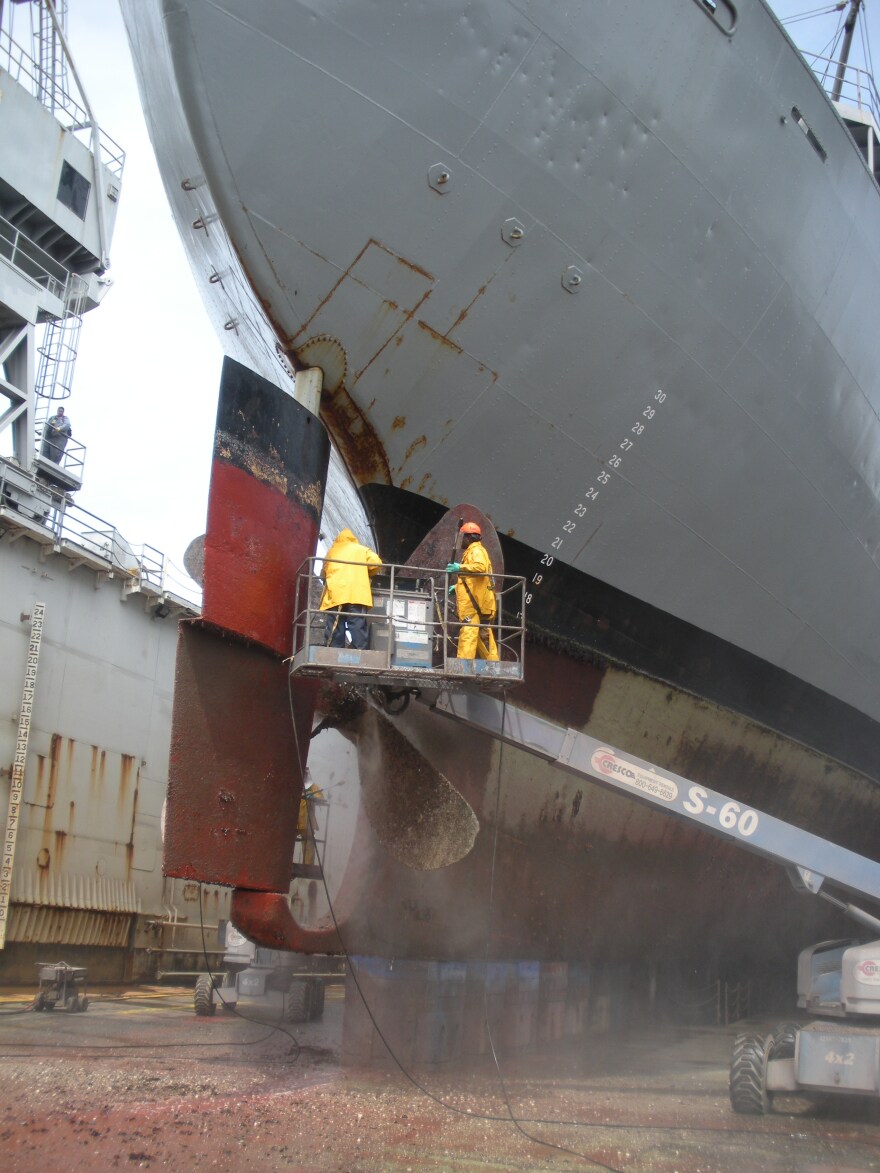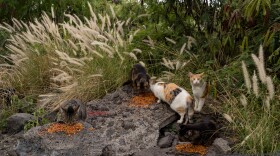Local marine conservationists are bracing themselves for the possible introduction of a deadly coral pathogen to Hawaiʻi's waters.
Since its first identification in Florida in 2014, stony coral tissue loss disease has earned a reputation as perhaps the most devastating coral disease in history.
In the last decade, it's infected the entirety of Florida's reef system and spread to more than 20 countries and territories in the Caribbean.
"We knew within the first couple of years of observing this that it was different and was going to be a big deal," said Dana Wusinich-Mendez, the Atlantic and Caribbean team lead for NOAA’s Coral Reef Conservation Program.
Unlike other coral diseases, which may only affect a handful of coral types, Wusinich-Mendez said SCTLD can infect several different species of coral.
"Typically, we see susceptibility rates of about 3-5% of the given species in any given reef area," Wusinich-Mendez said. "But with stony coral tissue loss disease, we're seeing rates that are closer to 60-100% of corals contracting the disease."
SCTLD quickly kills living coral tissue. Researchers have tried a whole host of treatments, ranging from chlorine to probiotics, to halt the disease. So far, those interventions have failed.
In some Caribbean countries, folks have tried to use natural remedies to save their dying reefs.
"From cinnamon oil to garlic to honey, nothing has worked," Wusinich-Mendez told HPR.
There's been some success in treating Florida's corals with the antibiotic amoxicillin, but it's by no means a miracle cure. Its application is time-intensive and costly, making it a difficult approach to adopt elsewhere.
"We're seeing major losses in coral coverage," Wusinich-Mendez said. "What were once colorful, thriving reef areas are now the equivalent of coral reef graveyards."
How would the disease get to Hawaiʻi?
Scientists don’t know how SCTLD could impact coral species in the Pacific. The best case scenario is that they never find out.
But the interconnected shipping industry puts the Pacific at risk, particularly the already-fragile marine ecosystem of Hawaiʻi.
In addition to most of our food and a few million barrels of crude oil, cargo ships also occasionally import invasive species to the islands.
These unwelcome visitors mainly hitch a ride in one of two ways: in biofouling, the crusty build-up of organisms on the hull of a ship, or in ballast water, seawater that a vessel takes up and releases to balance its weight when loading and unloading cargo.
One study estimates that these two vectors are responsible for almost 80% of the introductions of marine invasive species to Hawaiʻi.
Though there’s a lot we still don’t know about SCTLD, including its exact cause, scientists suspect that it can be transferred through both biofouling and ballast water.
"There's this huge potential for this pathogen to be introduced into the Pacific through the shipping industry," said Elizabeth Monaghan, an aquatic biologist with the state's Division of Aquatic Resources. "A lot of places are looking at Hawaiʻi as maybe the first place that this disease will show up in the Pacific."

What is the state doing to prevent marine invasive species?
Monaghan runs the Biofouling and Ballast Water Program, which is the state’s first line of defense against new invasive marine species. She and her team track the arrivals of commercial vessels and inspect those deemed high-risk or non-compliant.
But Monaghan's division, like so much of conservation work, suffers from a shortfall of manpower.
"For the Ballast Water and Biofouling Program, we have one civil service position, which is me," Monaghan said.
She also applies for an annual grant to bring another person on board. "And then sometimes we have an intern," she said.
So that's three people (on a good day) monitoring every commercial vessel that comes into the state's waters. Monaghan said that's simply not enough people to effectively stay on top of data collection and inspections.
"We've been asking for a team of eight," Monaghan said. "But even just having one more person would be really valuable to us."

Learning from California's successful program
Conservation funding has historically been a narrow sliver of the state's budget, subject to political whims and economic woes. California's Marine Invasive Species Program offers a different model.
Every vessel that comes into a California port has to pay a $1,000 fee to the Marine Invasive Species Control Fund. That funding mechanism allows their biofouling and ballast water program to be self-sustaining.

"That was one of the beauties of the (California) Legislature back in 1999 when they set up our program," said Chris Scianni, the Environmental Program Manager for California's Marine Invasive Species Program.
Scianni works on a 10-person team, with support from another 15 part-time inspectors, to monitor the 11,000 or so vessels that arrive in California each year. And California's investment has paid off.
"It's very rare now for us to see new detections of non-native species in our waters," Scianni said.
For all the mysteries of SCTLD, one thing is certain. Combating the disease after it has infected local coral species comes with a much heftier price tag than preventing its arrival in the first place.
"Florida has spent millions of dollars trying to fight this disease," Monaghan said. "If we can prevent it from coming here, it will not only save our beautiful reef ecosystems, but also save the state a lot of time and money."





